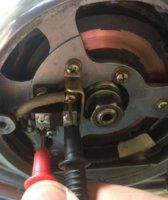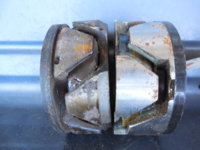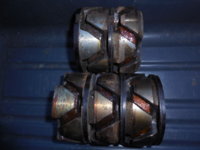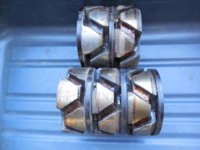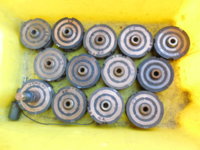gggGary, when I installed the rewound rotor the sanding was quite coarse - perhaps 180 - 240 Grit. I smoothed it off with 600 Grit and then polished with Autosol. I wonder if the wax in the Autosol was the problem?? Your mention of minerals spirits may be the answer to remove all traces of wax. I will do a 10 mile test ride as is and if all is well it will be new brushes and polished rings.
Thanks for the tip.
Note: Carbon brushes do not work in a vacuum according to a NASA documentary I saw in 1974. The brush needs oxygen absorbed at the interface.
Thanks for the tip.
Note: Carbon brushes do not work in a vacuum according to a NASA documentary I saw in 1974. The brush needs oxygen absorbed at the interface.

